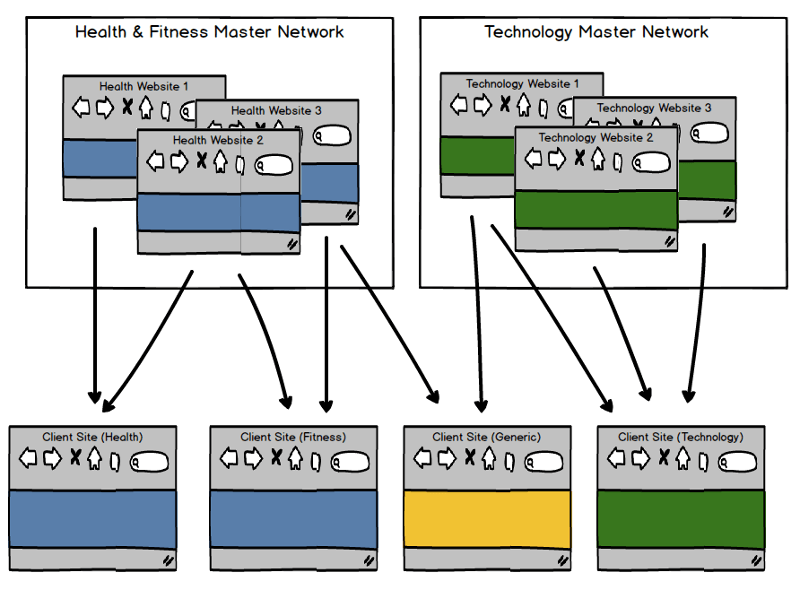All Categories
Featured
Table of Contents
- – What Is The Top Semantic Seo Content Strategie...
- – Who Is The Premier Implementing Semantic Seo M...
- – When Are The Top Semantic Seo For Beginners S...
- – What Is The Most Reliable Optimizing For Sear...
- – How Much Does It Cost To Have A Semantic Seo...
- – Which Is The Leading Semantic Seo Company
- – What Are The Leading Semantic Seo Ranking Fa...
The internet is transforming, coming to be a growing number of semantic. Search engine optimization is additionally transforming and coming to be much more semantic. This is due to the fact that internet search engine have actually developed and are relocating an increasing number of in the direction of reviewing content on the internet. Naturally, that has likewise altered the way we create web content, especially if we wish to rate much better in the online search engine.
Intertwingularity is not usually acknowledged, people keep acting they can make things deeply hierarchical, categorizable and consecutive when they can't. Based on the partnerships between search objectives, the search engine likes a web content in placing by determining the distance in between the vectors of meaning.
It allows you to see, starting from a topic, all the entities that belong to that subject. By doing this you can clearly see which entities/concepts/ideas have currently been covered on your site, and you can find brand-new possibilities by recognizing what web content you can add and exactly how to develop it.
What Is The Top Semantic Seo Content Strategies Product?
It is able to make your web content easy to understand for online search engine on the one hand and for your audience on the various other. Structuring your web content version highlights your material and its hidden relationships to make sure that online search engine can recognize you amongst hundreds of pieces of information, making you a lot more visible to users that satisfy the search intent associated to your business.
In semantic SEO copywriting, an editor starts from a more comprehensive variety of subjects and customizes the web content to include semantically relevant terms and phrases that assist viewers recognize a topic, similar to reviewing material in a wiki. From a material writing point of view, one practical means to do this is to develop a vocabulary of terms and concerns bordering your target subject.
Who Is The Premier Implementing Semantic Seo Manufacturer
Discover more concerning by viewing the by!.

Semantic search describes the process of how online search engine understand and match key words to a searcher's intent in natural search results page. Prior to semantic search, search engines like Google ran like matchmakersaligning particular words in your query with those exact words on web pages. The results were simple yet typically lacked deepness.
When Are The Top Semantic Seo For Beginners Sales
It makes it possible for Google to offer fast, precise answers to search queries regarding real-world topics. When you type an inquiry word right into Google, you're not just going into a series of words. You take advantage of an intricate web of definitions and connections. Google's Knowledge Graph sees these words as entities with context and connections.
When you look for "Apple," Google doesn't just see a word that defines a fruit. It identifies Apple as a business and can offer associated details. Like the name of its CEO, Tim Cook, or its newest supply rates. Google revealed the Hummingbird upgrade in 2013. It was Google's response to the increase of voice searches, where questions became much more conversational and nuanced.
What Is The Most Reliable Optimizing For Search Intent To Get
By incorporating NLP, Hummingbird enabled Google to relocate beyond simple keyword matching. It assisted the online search engine comprehend search intent, raising the chances that results would accurately match the factor behind a user's search. As the 3rd essential ranking element after material and web links, RankBrain has enhanced Google's semantic search capabilities to understand the meaning of search inquiries.
Making it more reliable at taking care of never-before-seen search queries. RankBrain takes into consideration more than simply search phrases when examining a search query.
So it brings outcomes that match the search phrases and line up with the overall intent of offering young puppy training guidance. And if the user regularly looks for dog-related web content, Google could focus on a lot more comprehensive training guidesrecognizing the customer's recurring rate of interest in the topic. Incorporating technologies like the Understanding Graph, Hummingbird, and RankBrain, semantic search helps the Google formula analyze and link information across a substantial internet of info.
How Much Does It Cost To Have A Semantic Seo Optimization Tools?
The emphasis changes from keyword choice to an all natural method including individual intent, topical importance, and overall individual experience. Developing web content that deals with the searcher's demands with thorough information can enhance your SERP rankings.
And kind of material can best please their needs. A broader technique to material aligns much better with semantic search's shift away from precise keyword matching and towards customer intent. Which discusses the boosted concentrate on topic clusters, rather than individual keyword phrases. Material that covers search queries more extensively not only satisfies customers.
UX intends to create a visually enticing, easy to use interface with appealing, quality content that motivates visitors to remain. Semantic search innovation allows search engines to aim for outcomes that provide the best feasible UX.
Which Is The Leading Semantic Seo Company

All showcase Google's capability to deal with a topic question adequately. By comprehending the context and intent behind user questions, internet search engine can deliver extra pertinent details and potentially raise individual involvement. Personalization in search results makes for much better UX.Based on your past search history and preferences as a user, semantic search aids online search engine customize the outcomes to suit your one-of-a-kind requirements and interests.
It fetches results that match the keywords and align with the general intent of offering pup training suggestions. And if the user frequently looks for dog-related web content, Google may prioritize more detailed training guidesrecognizing the customer's recurring rate of interest in the topic. Combining innovations like the Expertise Graph, Hummingbird, and RankBrain, semantic search aids the Google algorithm analyze and connect information throughout a huge internet of details.
What Are The Leading Semantic Seo Ranking Factors Brands To Buy
The focus changes from keyword choice to an all natural technique incorporating user intent, topical importance, and overall individual experience. Creating web content that resolves the searcher's demands with extensive details can boost your SERP rankings. Below, we describe the trends and methods that consolidate the demand for semantically educated content. Later on, we offer workable tips to transform these insights into finest practices.

A more comprehensive strategy to material aligns much better with semantic search's shift away from precise key phrase matching and toward customer intent. Web content that covers search queries more extensively not only satisfies individuals.
And five times greater than websites that take 10 seconds to load. While technical search engine optimization makes certain ideal internet site performance and accessibility, focusing on customer experience (UX) takes it a step further. UX intends to develop an aesthetically appealing, straightforward user interface with appealing, quality web content that urges visitors to stay. Semantic search technology makes it possible for search engines to go for outcomes that give the ideal possible UX.
All display Google's ability to attend to a subject query comprehensively. By understanding the context and intent behind individual queries, internet search engine can provide a lot more relevant details and possibly enhance customer involvement. Personalization in search engine result produces much better UX.Based on your previous search history and choices as a customer, semantic search helps internet search engine tailor the outcomes to match your special demands and rate of interests.
Table of Contents
- – What Is The Top Semantic Seo Content Strategie...
- – Who Is The Premier Implementing Semantic Seo M...
- – When Are The Top Semantic Seo For Beginners S...
- – What Is The Most Reliable Optimizing For Sear...
- – How Much Does It Cost To Have A Semantic Seo...
- – Which Is The Leading Semantic Seo Company
- – What Are The Leading Semantic Seo Ranking Fa...
Latest Posts
Who Makes The Top Semantic Content Optimization
What Is The Most Suitable Advanced Semantic Seo Plan?
When Are Top Semantic Seo For Beginners Sales
More
Latest Posts
Who Makes The Top Semantic Content Optimization
What Is The Most Suitable Advanced Semantic Seo Plan?
When Are Top Semantic Seo For Beginners Sales